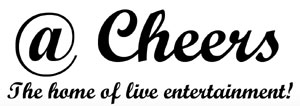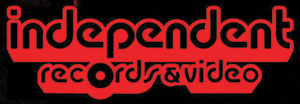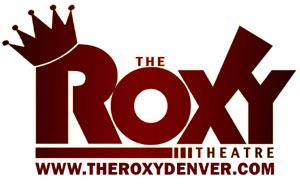The Manager’s Corner-Get Your Sh*t Together!
by Chris Daniels
I’ve managed my own band since the 1980s, and despite the amazing change in technology, success in the music business is built around some tried and true elements: great music & performance, really hard work, and timing (often mistaken for luck). The other key element is getting the help you need to make that luck happen. These days that help is everywhere. The book I wrote for my UCD class on artist management is called “DIY: You’re Not in it Alone” and that is exactly what you need to understand. But here is a new set of questions to consider about the biz.
While it’s no secret that big-box music stores like Guitar Center thrive on the hopes and dreams of artists with viability — as well as the ‘hobbyist’ doing it with little chance of ever doing more than spending a lot of money on equipment that will not make them famous or even a better musician — there are some tricks to the trade that can help working musicians free themselves from the tech nets to walk the high wire of art.
In simple terms, if you or your band or your DJ work includes equipment that is difficult or time consuming to set up, finicky or problematic, or just too damn big, you are in for a world of hurt when it comes to the work-a-day, set-up, play, break-it-down, and head-to-the-next-gig life. Don’t get me wrong, there is nothing more important then getting the tones and sounds you want or need for the music you perform; but here’s the deal, if the equipment that you need to do that becomes a pain in the ass for you or the sound techs you work with, there will be little joy in your life should you be lucky enough to go out on tour or work a lot of gigs.
I can’t tell you how many times I’ve seen the tech problems kill the show – and I’ve seen it both as a teacher working with young bands, and as a professional playing festivals and gigs all over the world. Last month at a student-run festival on the CU Denver campus, I saw a well-known ‘headliner’ band with tons of national experience come in and totally blow the set up and tear down, with equipment needs that were vague and not specified on the tech-rider, and with equipment that was not functioning the way it should–and these were pros!! It hurt their show, and it was a good show. So a few “rules” you should learn, or “guidelines” as Jack Sparrow might call them.
1) Fix your shit BEFORE you take it on the road. And I don’t mean just fix any ‘iffy’ cords or problematic power sources; I mean make it simple, fast to set up and take down, and easy to control in any environment. EXAMPLE: It’s summer, which means the pros are playing on outdoor festival-stages of all sizes. If your equipment has a problem with heat, not easily readable setting windows in direct sunlight, or if you are used to it sounding perfect in your home studio, YOU HAVE A PROBLEM. You have to deal with it. Every single stage you play sounds different. If it sounded great in your home studio and you can’t make it sound just as good at Herman’s or the People’s Fair stage, you have a problem. Simplify, and get so you can get the sounds you need in almost any conditions.
2) Become adaptable in space and the size of your rig. This is especially true of drummers. If you can’t share a drum kit with another band because you have to have a 2-kick set up and 4 floor toms, you are not a pro, you are a baby. Snap out of it! Clyde Stubblefield, James Brown’s famous ‘funky drummer’ sat in with my band on our drummer’s kit for a set and blew our flippin’ minds! This is the most ‘sampled’ drummer in history, whose grooves have been sampled for so many famous hip-hop/rap albums it’s insane. If he can sit down and play on a simple 5-piece kit using somebody else’s throne and kick-peddle, so can you. This is especially true if you are opening (support act) for a lot of bands. Learn how to use a very small kit because sometimes you will get very little room and no sound check. Deal with it! Become a pro.
3) Get your shit on and off stage FAST! You want to piss off a festival stage manager, or a venue stage manager, or the headline act? Play your set and then go talk to your fans right away and leave your crap on the stage. I guarantee you will either get a serious beat down by the stage manager; or worse, you will not get asked back to work with that festival or venue. Part of being adaptable is knowing how to structure your gear so that it can get moved on, plugged in, get sounds, and taken off the stage after your set with as little drama as possible.
4) If it’s important, carry two of them. In my band, we do not use keys. That means that the two guitar parts that create the bed for horns and vocals really are interdependent. We work on them and develop them like the Beatles did. And if one drops out, the whole house of cards comes down. So I carry two guitars – my favorite ax and a cheap but very, very playable knock-off of the same guitar that also sounds great – just in case (a) something goes wrong in 98 degree heat – I can switch to the back up, or (b) in case I break a string. And our show does not have a lot of stand around time – we burn. That means that the songs choreograph into one another via stories and music segues that are totally spontaneous (we don’t use set lists) and they never stop. Whether it’s a 45-min. opening slot, or a two-hour headlining slot. So if I break a string I can’t just say, “Oops, sorry folks, I have to change a string.” And I’ve seen this kind of stuff really wreck a good show. At that same student-run festival, another band with a moog-dependent sound had a plastic key break on the moog. The bandleader spent then next 20 minutes of a 30-minute set complaining about the problem and they lost their audience completely; and the show became about technical crap, not music or art.
This may not be an easy thing for some artists to do. It does take time, experimentation, and persistence to get it down to a science. But once you get there, once your equipment isn’t a distraction but a tool to take your audience along with you for the journey you came to give them, then you are set free to go beyond “my digital delay settings,” and to transcend the technical so that it “serves” the performance, and not the other way around. And there is nothing worse for an audience than to see you sit there screwing around with your gear and making lame-oh excuses about why your crap doesn’t work while they listen to you whine and whine. That sucks for them, so get your poop in a group. It really will set you free.
Category: Shop Talk



















Chris, Absolutely LOVE this article and the brilliant simplicity in which you describe what needs to get done to get it done right. 🙂 Thanks man… awesome.